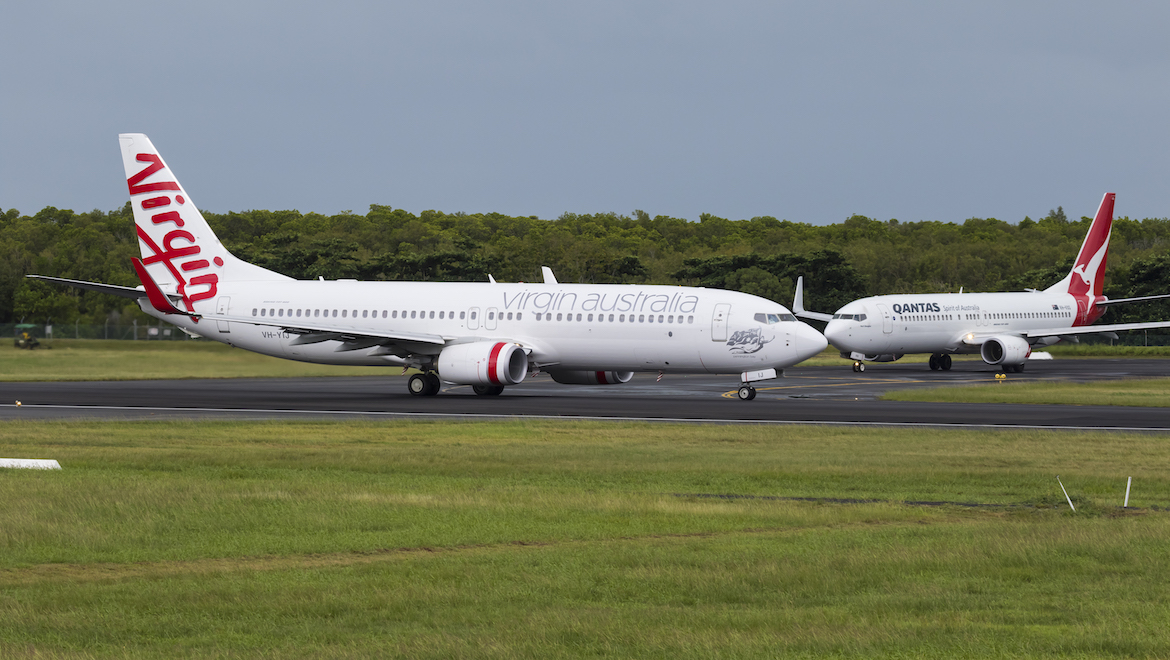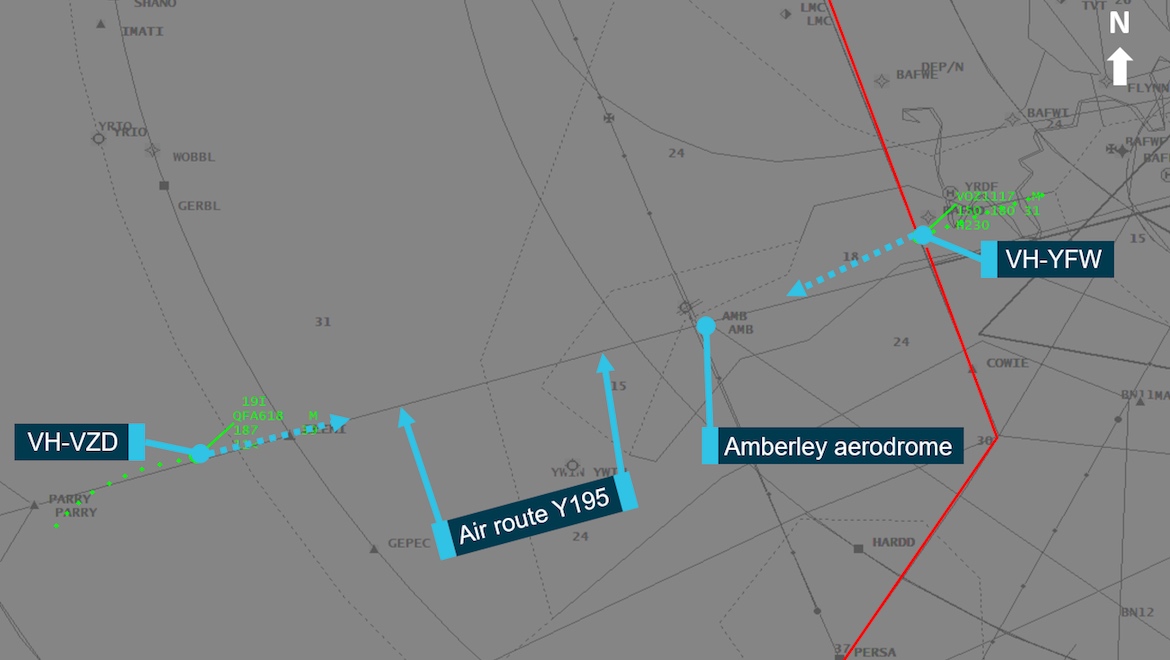
The Australian Transport Safety Bureau (ATSB) says Airservices Australia and the Royal Australian Air Force (RAAF) have taken corrective action to improve air traffic control (ATC) communication after a loss of separation event near Brisbane.
The safety message was included in the ATSB final report into the October 11 2018 incident involving Qantas 737-800 VH-VZD flying from Melbourne to Brisbane as the QF618 and Virgin Australia VH-YFW flying from Brisbane to Proserpine as the VA1117.
Both aircraft were on reciprocal tracks when a loss of separation occurred, the ATSB said in its final report published on Wednesday.
The two 737-800s had a minimum-recorded distance between them of 2.1nm horizontally and 650 feet vertically. This was below the required separation of 3nm horizontally and 1,000 feet vertically.
The ATSB final report noted both aircraft were fitted with traffic collision avoidance systems, which would have assisted in providing separation instructions to the pilots in the event air traffic control (ATC) was unable to resolve the situation.
While the Qantas 737 was being controlled on the RAAF Amberley military air traffic control (ATC) frequency, the Virgin Australia 737 was being controlled on an Airservices Australia civil ATC frequency from Brisbane.
“At 1412:20, the Brisbane departures controller advised the Amberley approach controller that YFW would contact them for separation, and at 1412:29 instructed the flight crew of YFW to contact Amberley approach,” the ATSB final report said.
“Around this time, the Brisbane ATC display presented a short term conflict alert (STCA) to the Brisbane departures controller. At about the same time the Amberley approach controller issued a safety alert4 to VZD and instructed the crew to turn left (north).
“Upon contact with YFW at 1413:10, the Amberley approach controller issued a safety alert and instructed them to turn to left (south).
“After both aircraft had turned and separation recovery actions were complete, VZD resumed its descent into Brisbane and YFW continued its flight to Proserpine.”
An ATSB graphic (below) showed the position and direction of the two aircraft when VH-YFW entered Amberley airspace at 1411:44. The red line indicated the boundary between Brisbane airspace (right) and Amberley (left) airspace. Air route Y195 was assigned to VH-VZD.

The ATSB final report said the Virgin Australia 737 VH-YFW was flying ATC-assigned radar headings, rather than using a procedural standard instrument departure, due to thunderstorms in the area.
The aircraft entered Amberley airspace without a hand-off from Brisbane ATC and without instructions to the crew to change to the Amberley frequency.
This resulted in VH-YFW monitoring an incorrect frequency on entry to Amberley airspace, meaning Amberley ATC was initially unable to communicate with the flight crew.
Further, the civil air traffic controller in Brisbane did not hand-off VH-YFW until after it had entered Amberley airspace.
Also, the ATSB final report said that just prior to the incident Brisbane terminal control did not advise Amberley ATC of a change in configuration to the terminal control unit consoles.
Once appropriate communication with Amberley and Brisbane ATC was established, the outbound aircraft was transferred to the Amberley frequency, and the aircraft were initially diverted away from each other, before being re-established on their respective tracks.

The ATSB final report said that since the incident occurred both the RAAF and Airservices Australia had taken corrective actions to improve communication and coordination between each other.
“This has included deploying a dedicated communications pathway between Amberley approach and the Brisbane Departures South air traffic control positions, and implementing an airspace release that controls the risk that short notice deviations present across the non-linked systems,” the ATSB final report said.
ATSB director for transport safety Stuart Godley said the successful recovery of adequate separation illustrated the effectiveness of the conflict resolution training received by air traffic controllers in loss-of-separation events.
“This investigation highlights the importance of clear communication and coordination between air traffic controllers operating in different, yet immediately adjacent airspace, and the need for a clear understanding of the responsibility for separation assurance, especially when operating without a shared traffic picture,” Dr Godley said in a statement.
“The ATSB welcomes the new dedicated communications pathway between the Amberley approach and Brisbane departures south positions, and the implementation of an airspace release that controls the risk that short notice deviations present across the two non-linked systems.”
The full report can be read on the ATSB website.
















